Rooster weathervanes were so common that they even appear in the Bayeux Tapestry, and embroidered cloth celebrating the 1066 Norman conquest of Britain. Among the numerous details documenting the aftermath of the battle is a depiction of a craftsmen installing a rooster weathervane on top of Westminster Abbey.
|
Before modern technology made weather information readily available, weathervanes served as a dependable weather tool. These antique weathervanes allowed people to track wind speed and direction, delivering valuable information that affected shipping, travel, and agriculture. While today’s weathervanes are mainly used for decoration, their classic designs evoke a rich sense of history and still serve as a practical tool for those who wish to track the wind. Perhaps the most famous antique weathervane design is the rooster, gracing church steeples since the 9th century. That is when Pope Nicholas I decreed that every church should display a rooster on its dome to remind Christians of their faith. Churches opted to make these roosters into weathervanes because their tail is the perfect shape to catch the wind. And since steeples were typically the highest point in town, they were the optimal placement for a weathervane. Rooster weathervanes were so common that they even appear in the Bayeux Tapestry, and embroidered cloth celebrating the 1066 Norman conquest of Britain. Among the numerous details documenting the aftermath of the battle is a depiction of a craftsmen installing a rooster weathervane on top of Westminster Abbey. During the mid 19th century the most popular sport in America was horse racing. Race track betting was a regular American pastime, and harness racing could be found at every agricultural fair. Much like the sports stars of today, racehorses enjoyed immense popularity, with lithograph prints of racehorses a common household decoration. Some of the most popular Currier & Ives prints of all time featured the racehorse Black Hawk and his son, Ethan Allen. The popularity of racing also crossed over into weathervanes as craftsmen immortalized these horses in their designs. Some of the most valuable antique weathervanes are based on these famous racehorses. If you are looking for an antique weathervane design, the simple elegance of arrow weathervanes shouldn’t be overlooked. During the Middle Ages, weathervanes in the shape of an arrow or pennant were common throughout Europe. In fact, scholars believe the word “vane” is derived from the Saxon word “fane,” or “flag.” In medieval times, archers hung fabric flags from towers to improve their accuracy by gauging wind speed and direction. The fabric flags were eventually replaced by more durable metal, often decorated with the property owner’s coat of arms. The arrow design remained popular because of its simplicity, accuracy, and economy. Arrow weathervanes were favored by many farmers because the design was easy to produce and easy to read, even when placed atop a roof or cupola. If you’re looking for a weathervane for your roof, garden, or cupola, be sure to browse our extensive collection of unique, high-quality weathervanes. Crafted from the finest copper, these weathervanes will be enjoyed for many years to come! Call us at 866-400-1776 and order your weathervane today!
2 Comments
CW Gowen
8/2/2020 05:43:14 pm
Interested in a weathervane with fish and mermaid. Live in Norfolk Va where the city mascot is the mermaid. Suggestions? Medium sized to go on a pergola about 12’x12’x12’ with A-frame slats covered by cloth strips. Thank you. CW
Reply
8/3/2020 05:37:55 am
Please look at this link for our Sealife Weathervanes We have many new Mermaid weathervanes http://www.valleyforgecupolas.com/sealife.html
Reply
Leave a Reply. |
A Little
We are the "Cupola Specialists" who can help you with every aspect of your cupola selection. Let us do a customized digital quote so that you can see exactly how one of our beautiful vinyl or wood cupolas will look on your roof. Archives
June 2024
|

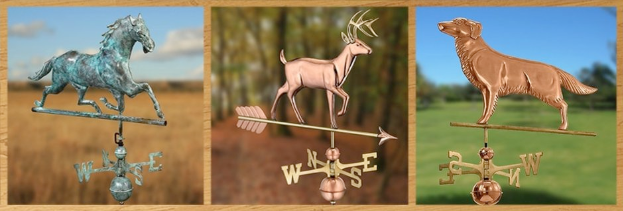
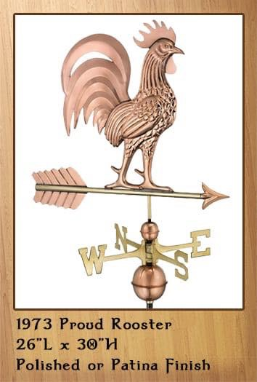
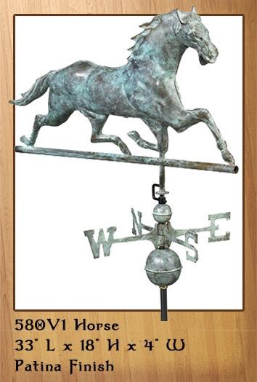
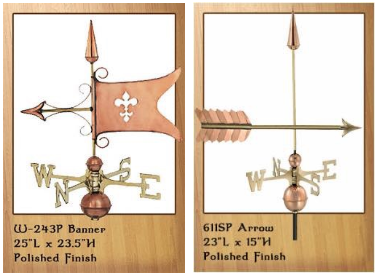
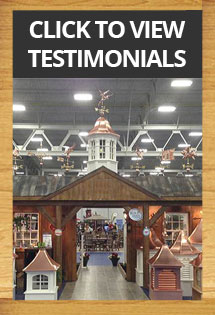
 RSS Feed
RSS Feed